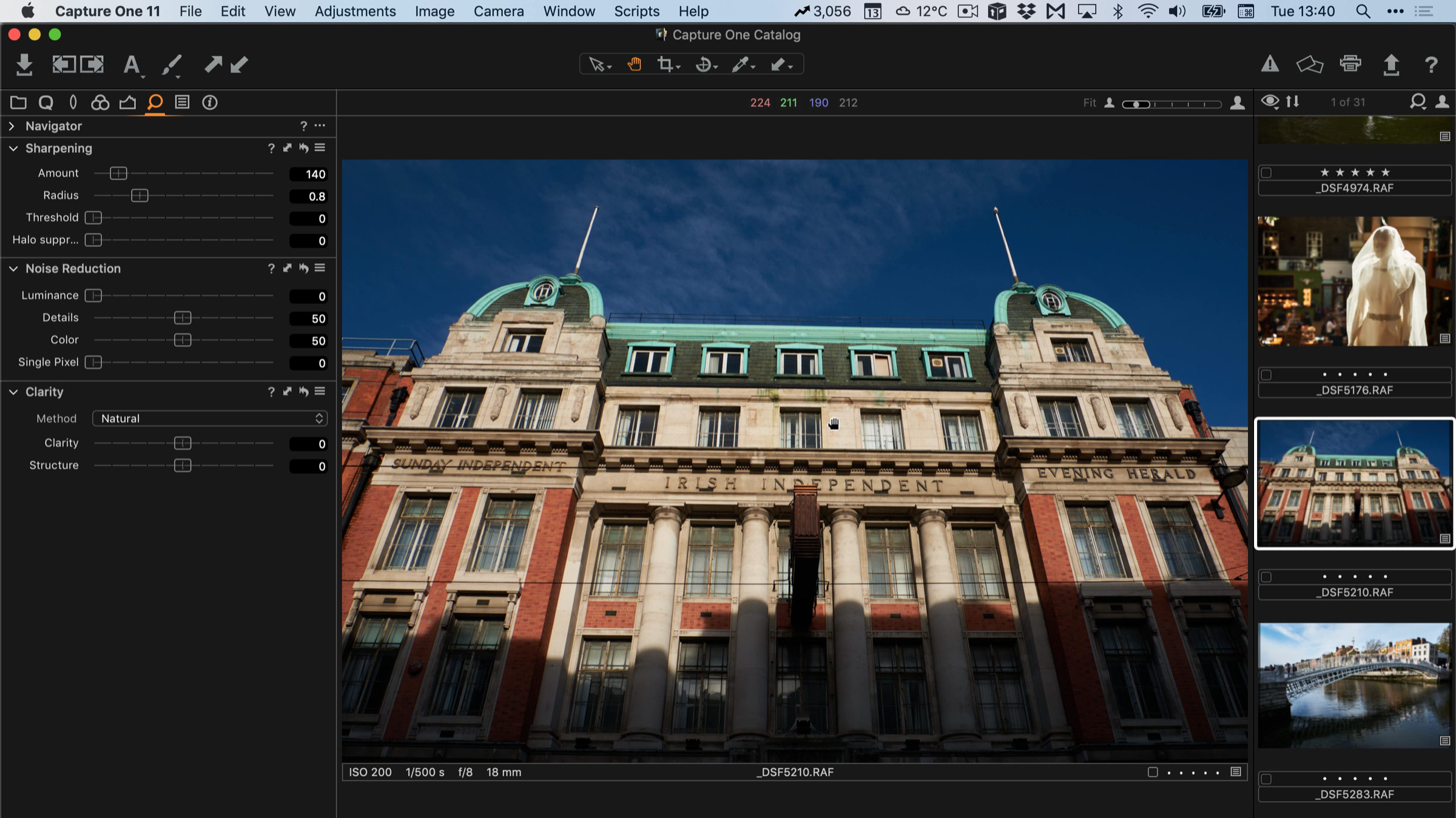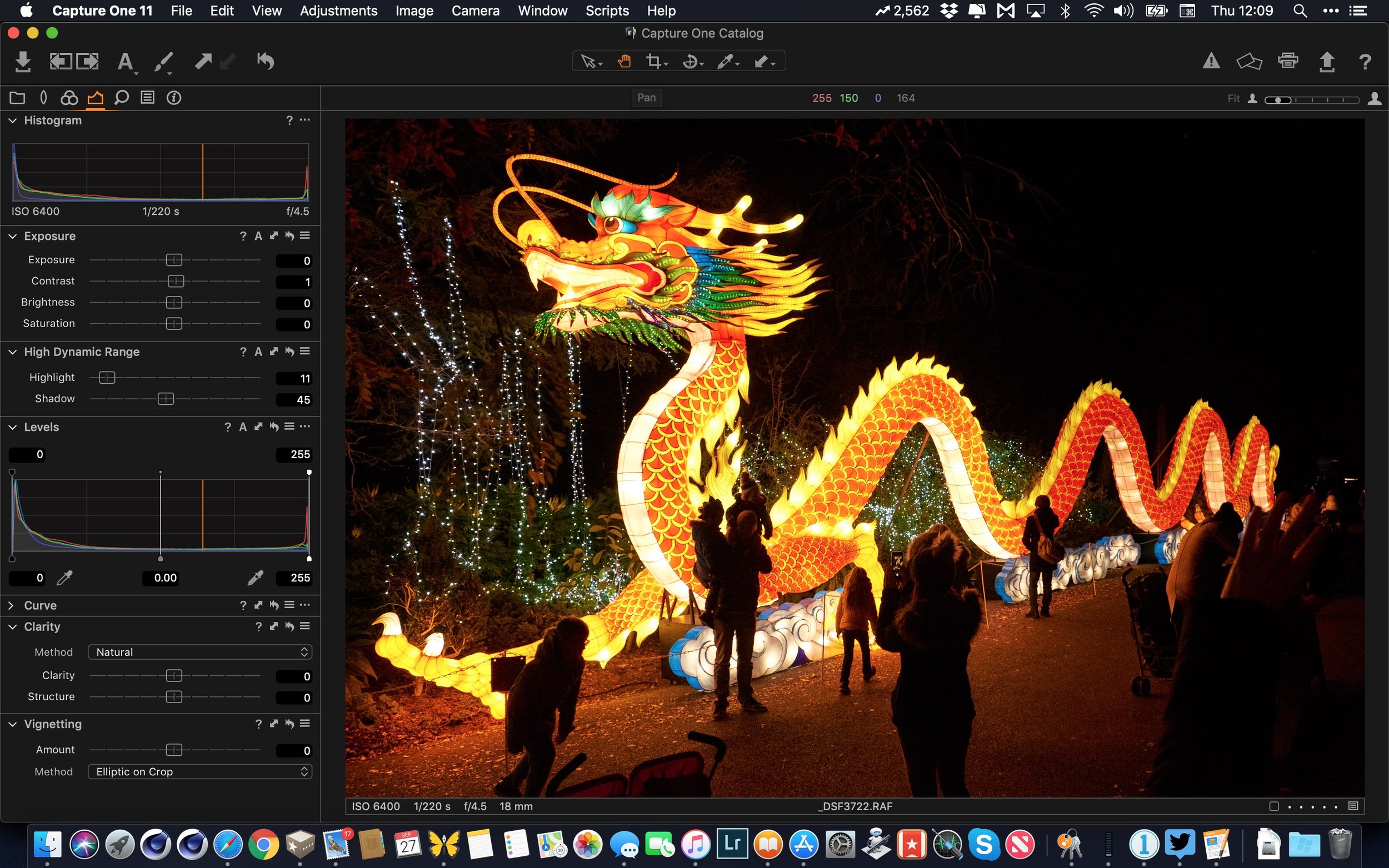A while ago I posted a collection of some free styles for Capture One here on my blog, but I realise that they were buried a little in an old blog post, so I’ve put them over on my store to make them easier to find. There are a few different sets of styles in the collection, and they were mostly experiments and various looks that I had created, but I never really made into a consistent pack. I do have another set of premium styles coming soon, and I’ll talk more about that in a minute.
All in Capture One
Video: How to improve Capture One’s Preview Quality
I had blogged about this issue back in 2017, and as its still something that is present to some extent in the Capture One 12, I thought that I would revisit the fix I use for this. So rather than re-do the blog post I thought I would do it as a video. Basically, the issue with the way Capture One renders its previews is that it doesn’t render certain things properly, and in some cases the preview an be quite soft. I came up with a way to use recipe proofing to generate a more representative preview and in this video I show you how to do this…
New Capture One “Editorial” Style Pack from Phase One
Phase One is taking an interesting approach to creating their own Styles withe their latest Style packs. For a start it is interesting that a first party manufacturer has seen the advantages of creating their own add ons - something that Adobe never did with Lightroom. But their new “Editorial” Styles Pack was created in collaboration with renowned photographers and retouchers.
Capture One Quick Tip - Automatically Set the Film Simulation that you Shot With.
I was so excited when Capture One added Fuji film simulation support that I missed one of the handiest feature of the new version. One of the commenters on my YouTube channel pointed this following tip out, so big thanks to them for that! You can have Capture One detect which film simulation mode you shot with in-camera, and it will automatically apply the appropriate film simulation mode. Unfortunately, it doesn’t explicitly tell you which one you used, but it still works.
Dust and Spot Removal in Capture One
Removing dust and spots in Capture One is actually quite easy, but it can be a little confusing for new users because of the fact that there are a few ways to do it. There’s also the problem that there are a few tutorials online that show you the most inefficient way to fix dust and spots, and that’s by using a healing or cloning layer. But there’s actually a dedicated dust and spot tool, that works in a much easier way for multiple spots, and is effective most of the time.
Video: Setting Fuji Film Simulation Modes in Capture One 12
Last week’s release of Capture One 12 is a significant update, and for Fuji Shooters the biggest news is probably the addition of Fuji’s film simulation modes. In this video I show you how to set them as well as a few related tips.
Capture One 12: New Features and First Impressions
Last week Phase One released the latest big update to Capture One, bringing it to version 12, and it is a significant change over previous versions. The interface has been completely revamped, and the company has added a good few new tools and features. For Fujifilm shooters, the software now supports Fuji’s film simulation profiles.
A Simplified Approach to Sharpening in Fuji Files in Capture One
I’ve written a lot about sharpening Fuji files in various pieces of software, and in fact, I have a whole guide for Capture One with details and corresponding presets. However, for some, this may be still a little too complicated, so I wanted to give you just the absolute basics. This is particularly suitable for those who may be using Capture One Express but the advice works for both express and pro versions. I fact, this advice will really work with any file.
Capture One Express Fujifilm Q&A
A little while ago I posted a video overview of the new “express” version of Capture One. That video generated a lot of interest, and I also got a lot of questions about the software. With that in mind I created a follow up video where I answered the most common questions.
Video - Capture One Express For Fujifilm: Getting Started and How to Use it
With the launch of the new free version of Capture One for Fuji shooters, I figured a lot of people would be trying the software for the first time. The software can be a little confusing at first however, especially if you’re coming from Lightroom, and some of the features may be a little hidden or not work the way you think. With that in mind I created a video to give you an overview of how to use the software.
Styles in Action: Creating Impact in Black and White with SilverLux and Capture One
One of the many things I like about Capture One, is the way you can create some really nice monochrome images with it. I’m not sure what it is about the software, but whatever is going on behind the scenes gives black and white images a really rich black look to them. It was this that caused me to create my first set of Capture One styles: Silver Lux.
Capture One Express Fujifilm: A Quick Overview
This week Phase One released a new cut down version of Capture One which is free for Fuji shooters. While it doesn’t have all of the features of the full release, it can do quite a lot, considering that it is free. If you’re a Fuji shooter, and you were looking for a Lightroom alternative, then it’s worth giving it a try. In order to evaluate this, I downgraded my full version on one of my computer to check out what was included in the express option.
Fujifilm announces collaboration with Phase One; Improved Fujifilm Support Coming to Capture One
Of the news coming out of Photokina today, this probably flew under the radar amid all the camera announcements, but I think it is one of the most significant for Fuji shooters. Phase One has basically done a deal with Fuji to better support Fuji cameras including its medium format cameras. It will also release a Fuji specific version of Capture One (similar to what the company currently does for Sony).
Sharpening and Noise Reduction Presets for Processing Sony Files in Capture One
I recently posted a video to my YouTube channel about processing some Sony A6000 images in Capture One. In the video I mentioned some sharpening and noise reduction presets that I use. These should work with any Sony RAW file, so even those from the Sony A7 series or the A9. You can find links to download in this post, as well as the video itself.
10 Capture One Quick Tips
Capture One is a complex application and I’m always discovering new things with it. It’s one of those things where there are often features or techniques hidden in plain sight. I’ve collected a series of tips below, which you may find useful. Some of these are from the point of view of someone moving from Lightroom, but they should be applicable to any Capture One user. You may, of course, know some or all of these already, but anyway, I hope this is useful.
Introducing Alpine for Capture One
A few weeks ago when I launched Alpine for Lightroom, a few people wrote to me asking for a Capture One version. After some work and experimentation, I’m happy to announce that I now have a version of Alpine for Capture One. So what is Alpine? In a nutshell, Alpine for Capture One is a set of “Styles” that is designed to give your RAW images a stylised look. The idea for Alpine was to work with images of forests and mountains, to give the “woodsman” style of effect that is popular certain outdoor magazines.
Video: How to Create Your Own Custom Colour Profiles in Capture One
If you use Capture One, but find yourself tweaking the colours of your images a lot, then there’s actually a really useful feature in the software. You can create your own custom colour profile. This is sort of like being able to adjust the calibration like you can in Lightroom only it works in a different way.
Some Free Styles for Capture One
I’ve been building up a collection of Styles in Capture One for some time, and I originally had the intention of releasing hem as a styles pack, but I was never really happy with them as a complete pack. However, I’ve developed quite a few over the years, and they’re just sitting here on my computer, so I thought I’d share them anyway.


















